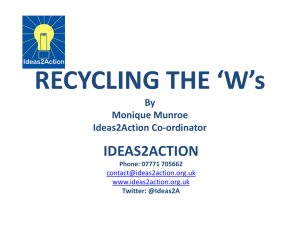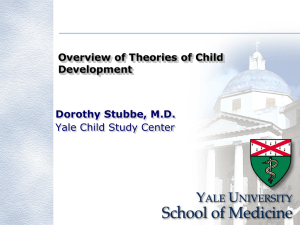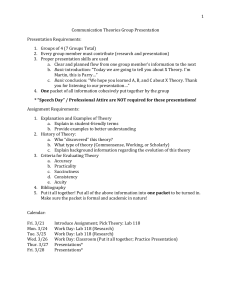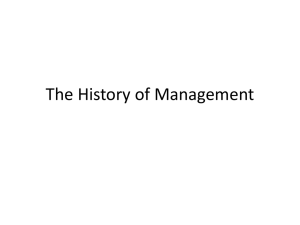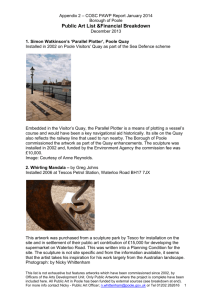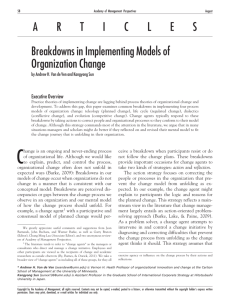Using Paradox to Build Management and Organization Theories
advertisement
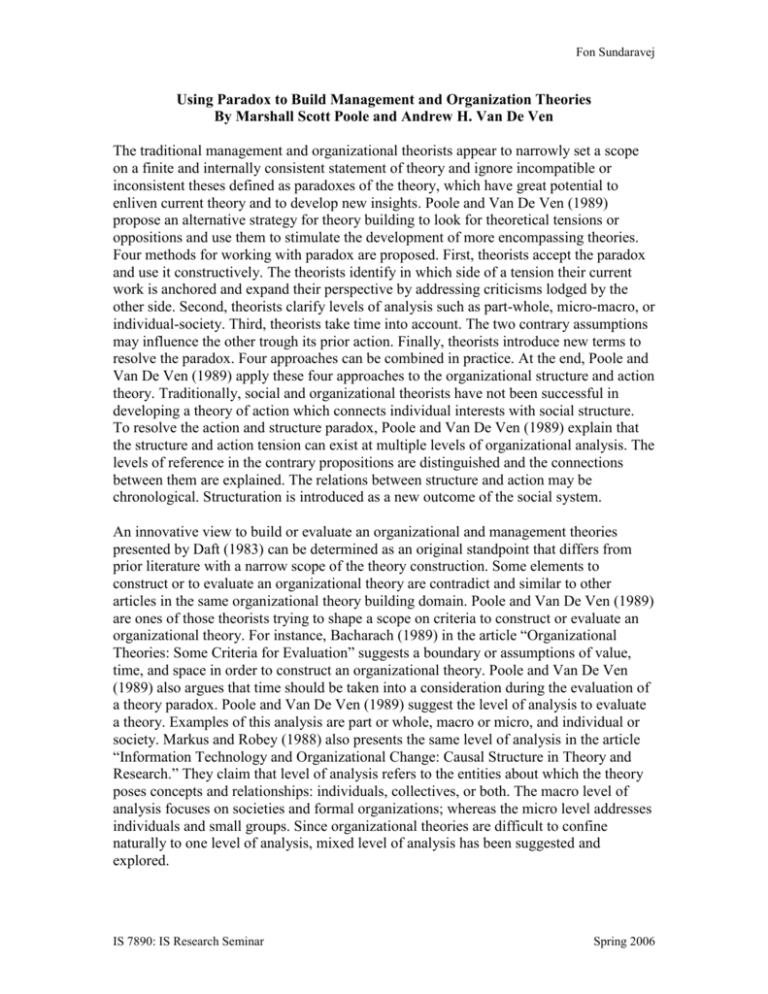
Fon Sundaravej Using Paradox to Build Management and Organization Theories By Marshall Scott Poole and Andrew H. Van De Ven The traditional management and organizational theorists appear to narrowly set a scope on a finite and internally consistent statement of theory and ignore incompatible or inconsistent theses defined as paradoxes of the theory, which have great potential to enliven current theory and to develop new insights. Poole and Van De Ven (1989) propose an alternative strategy for theory building to look for theoretical tensions or oppositions and use them to stimulate the development of more encompassing theories. Four methods for working with paradox are proposed. First, theorists accept the paradox and use it constructively. The theorists identify in which side of a tension their current work is anchored and expand their perspective by addressing criticisms lodged by the other side. Second, theorists clarify levels of analysis such as part-whole, micro-macro, or individual-society. Third, theorists take time into account. The two contrary assumptions may influence the other trough its prior action. Finally, theorists introduce new terms to resolve the paradox. Four approaches can be combined in practice. At the end, Poole and Van De Ven (1989) apply these four approaches to the organizational structure and action theory. Traditionally, social and organizational theorists have not been successful in developing a theory of action which connects individual interests with social structure. To resolve the action and structure paradox, Poole and Van De Ven (1989) explain that the structure and action tension can exist at multiple levels of organizational analysis. The levels of reference in the contrary propositions are distinguished and the connections between them are explained. The relations between structure and action may be chronological. Structuration is introduced as a new outcome of the social system. An innovative view to build or evaluate an organizational and management theories presented by Daft (1983) can be determined as an original standpoint that differs from prior literature with a narrow scope of the theory construction. Some elements to construct or to evaluate an organizational theory are contradict and similar to other articles in the same organizational theory building domain. Poole and Van De Ven (1989) are ones of those theorists trying to shape a scope on criteria to construct or evaluate an organizational theory. For instance, Bacharach (1989) in the article “Organizational Theories: Some Criteria for Evaluation” suggests a boundary or assumptions of value, time, and space in order to construct an organizational theory. Poole and Van De Ven (1989) also argues that time should be taken into a consideration during the evaluation of a theory paradox. Poole and Van De Ven (1989) suggest the level of analysis to evaluate a theory. Examples of this analysis are part or whole, macro or micro, and individual or society. Markus and Robey (1988) also presents the same level of analysis in the article “Information Technology and Organizational Change: Causal Structure in Theory and Research.” They claim that level of analysis refers to the entities about which the theory poses concepts and relationships: individuals, collectives, or both. The macro level of analysis focuses on societies and formal organizations; whereas the micro level addresses individuals and small groups. Since organizational theories are difficult to confine naturally to one level of analysis, mixed level of analysis has been suggested and explored. IS 7890: IS Research Seminar Spring 2006

